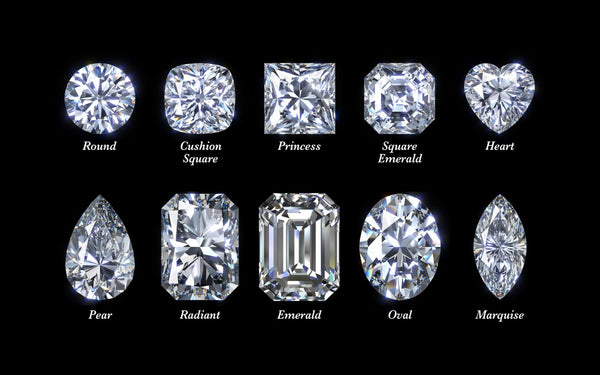Precious Metals

GOLD
Gold, like silver, platinum and other precious metals, is a natural chemical element, which means it cannot be manufactured. Interesting features of gold are that it is an element remarkable for its rarity, density, softness, and its very good electrical conductivity. It is also largely inert, and therefore is almost totally immune to decay, and thus can be stored cheaply for long periods.
Gold is a very dense metal with a density of 19.32 g/cm3 which gives it a very heavy atomic weight of 196.9665 g/atom. It is so distinctively heavy that solid gold offers its own immediate qualitative verification in the hand. Gold's heaviness is also important in that it means large amounts of gold can be stored in relatively small spaces.
- 24 karat = 100% gold Too soft for jewelry
- 22 karat = 91.7% gold Very soft — not recommended for jewelry
- 18 karat = 75.0% gold Recommended for fine jewelry
- 14 karat = 58.3% gold Recommended for jewelry
- 12 karat = 50.0% gold Not acceptable for jewelry
- 10 karat = 41.7% gold The legal karat limit considered as real gold in the United States
Gold comes in different colors including: Yellow, White, Pink, or Black.
PLATINUM
The rarest and most precious metal commonly found in jewelry is the white metal, platinum. It is a relative newcomer to jewelry, having become popular in the past 200 years or so. Like gold, it is rare and heavy, but it is more durable than gold and is sold in purer form. It is sometimes mixed with 5% or 10% of iridium and ruthenium to make it harder, which also belong to platinum family. Platinum is not sold according to karat weights. It is stamped PT or plat in the United States to indicate that it is platinum.
Because it is considered hypoallergenic, platinum is excellent for people who are allergic to other metals. Its white color also makes it popular. It makes diamonds really show off their brilliance and color.
PALLADIUM
Palladium is a sister to platinum, a “noble metal” (member of the the platinum group of metals) with some rather unique properties that ensure a place for it in industry and as a precious metal investment. This fascinating metal is tied closely with platinum from both history and its properties. Even so, important differences remain in physical properties and in today’s supply and demand economics.
Palladium is lighter than platinum having about the same density as silver, thus, palladium is a jewelry metal as well. Palladium in jewelry is primarily used as an alloy with gold to create a whiter look on the metal. Palladium is also used as an alloy in producing white gold.
SILVER
Although silver was found freely in nature, its occurrence was rare. Silver is the most chemically active of the noble metals, is harder than gold but softer than copper. It ranks second in ductility and malleability to gold. It is normally stable in pure air and water but tarnishes when exposed to ozone, hydrogen sulfide or sulfur. Due to its softness, pure silver was used for ornaments, jewelry and as a measure of wealth. In a manner similar to gold, native silver can easily be formed.
Galena always contains a small amount of silver and it was found that if the lead was oxidized into a powdery ash a droplet of silver was left behind. Another development in this process was the discovery that if bone ash was added to the lead oxide, the lead oxide would be adsorbed and a large amount of material could be processed. By 2500 BC the cupellation process was the normal mode of silver manufacture.




